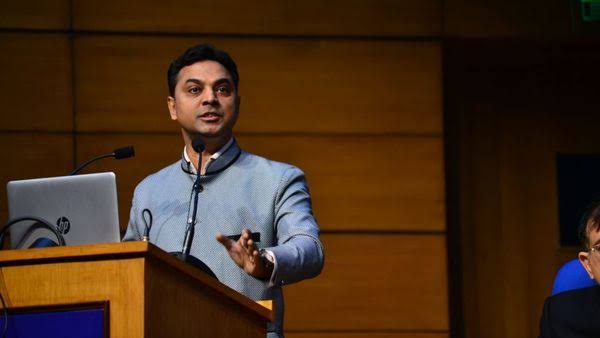
The Economic Survey’s volume I conventionally comes out with philosophical and theoretical analysis of current economic situation. This time also the CEA and his team presents lot of analysis, interpretations and approaches on leading issues. The survey caricatures difficult time for the economy at present but predicts quick recovery.
A remarkable feature about the Volume I is its attack on crony capitalism. It says that Trust is vital and trust in the system will be there if crony capitalism is ended and pro-business approach by supporting new entrants are created.
Likewise, several approach making analyses are there in the economic survey Volume I that incorporates the strong analytical mindset of the CEA Krishnamurthy Subramanian:
- Trust in the economy is very vital – this chapter illustrates that ending crony capitalism gives value to the economy. This is necessary for India to become a $5 bn economy. Chapter 3 also urges to counter crony business under the title Pro-business vs pro-crony.
- Sometimes government regulation hurts the economy- the survey here points out the case of drug controls, loan waiver etc produced adverse results.
- A slight change in Make in India is needed: Give importance to assembling products in India by integrating with Global Value Chains network created by MNCs. India should concentrate in job creating manufacturing sector.
- Ease of Doing Business: regulations should be simplified in starting of new business, contract enforcements, logistics etc.
- The banking sector is undersized compared to the size of the economy. Though banking sector expanded in terms of branches due to bank nationalisation, the PSBs suffers on several fronts.
- Exposure of the NBFC sector to short term wholesale funds should be curtailed. This will reduce their dependence on such funds and hence their liquidity problems can be averted.
- The most important stand of the Survey is on privatisation. The survey here after analysing the performance of the previously privatized 11 CPSEs conclude that privatisation is good for CPSEs and for the economy as it will create more values.
Following are the key points of the Chapters under Voluem I of Economic Survey 2019-20
- Recovery in a difficulty year: the challenges and the way out
We are going through a difficult time:
- World Economy is growing at the slowest rate of 2.9% since the Global Financial Crisis of 2008.
- India’s economy is estimated to register its recent lowest growth at 5%.
Prospects:
- During the current year, growth may be 5% with slight recovery during the second half, induced by investment in infrastructure and demand revival.
- Still the economy may recover to register a growth rate between 6 to 6.5% during 2020-21.
To achieve this what to do?
- Monetary policy is exhausted.
- Thus, economic reforms by government can bring positive momentum in the economy.
- The market mechanism should be supported by ‘trust’ for India to become a $5 trillion economy (Chapter 01).
India’s past glory:
- For more than three fourths of the history, India has been a dominant economic power globally.
- During those hight times, the weas a market mechanism for wealth creation and similarly, there was overall trust factor.
How can become a $5 trillion economy?
- It critically depends on strengthening the market mechanism together with the hand of trust which can support the market.
What is the idea of trust?
- The survey highlights the idea of trust to support the market and economy.
- ‘Trust is a public good that gets enhanced with treater use. Transparency and effective enforcement will help to build the trust.
- Trust is ensured when there is absence of corruption and crony capitalism.
The pro-business s policies to support the market:
- Provide equal opportunities to the new entrants into the business.
- Eliminate unnecessary government interventions in the market.
- Use trade for creating more jobs.
- Scale up the banking sector to the proportionate size of the Indian economy.
- Wilful defaulters have taken away a significant portion of money from the banking system.
- Audit failures and wilful defaulters have contributed to the current crisis.
- Entrepreneurship and Wealth Creation at the Grassroots (Chapter -2)
- Indian witnessed creation of large number of new firms:
- Start-up India programme aims to promote entrepreneurship to fuel productivity growth and wealth creation.
- India ranks third in the number of new firms created.
- Most of the new firms were created in the services sector compared to manufacturing, infrastructure and agriculture.
- The birth of new firms was not uniform among districts and sectors.
- Literacy, education and infrastructure were the key in promoting entrepreneurship across the various states.
- States with highest level of entrepreneurial activities in the agricultural sector: Manipur, Meghalaya, Madhya Pradesh, Assam Tripura and Orissa.
- States with highest level of entrepreneurial activities in the manufacturing sector: Gujarat, Meghalaya, Puducherry, Punjab and Rajasthan.
- States with highest level of entrepreneurial activities in the services sector: DELHI, Mizoram, UP, Kerala, Andaman and Nicobar and Haryana.
- Pro-Business versus Pro-Crony: why we need pro-business policies to become a $ 5 trillion economy.
India’s ambition to become a $5 trillion economy depends on two factors:
(1) promoting probusiness policies that helps competitive markets, wealth generation and
(2) avoiding pro-crony policies that favour some selected private business interests.
- Pro-business policies support creative destruction, generation of wealth and entrepreneurship. Creative destruction brings new technologies, and lower prices to the consumers.
- Pro-crony policies in the past has destroyed value in the economy, created wilful defaulters and caused draining of wealth from banks.
- Undermining Markets: When Government Intervention Hurst More than it helps:
Often government regulations produce adverse effects on the economy, and it restricts wealth creation. There are four examples for this trend:
- Frequent imposition of stock limits in commodities aimed to check price fluctuations created rent seeking and harassment.
- Regulation of drug prices led to increase in prices of regulated drugs.
- Government policies in the food grains markets made government the largest procurer and hoarder of food grains and this adversely affected competition in the market.
- Debt waivers have made farmers to consume less, save less, invest less and they became less productive as well.
- Integrate Assemble in India for the world into Make in India: Creating Jobs and Growth by Specialising to Exports in Network Products.
The current international trade presents and unprecedented opportunity to chart a China- like labour intensive export development model.
- For this we have to integrate a policy of ‘Assemble in India for the world’ into Make in India.
- Through this approach, India can create 4 crore well paid jobs by 2025 and 8 crores by 2030.
- Labour intensive production in ‘network products’ where production occurs across Global Value Chains (GVCs) operated by MNCs will help us big.
To become a good exporter, India should:
- Specialise in areas where its comparative advantage lies.
- Assemble the ‘network products’ that are produced by MNCs like Apple, Samsung etc.
- Improve participation in global value chains.
- Enhance participation in high income countries.
- Targeting Ease of Doing Business in India:
- Though improvement were made in Ease of Doing Business, India lags behind in Starting a business, registering property, Paying taxes and Enforcement of Contracts.
- Efficiency of logistics should be enhanced: Here, the process flow for exports through logistics should be made more time saving for exports through ports.
- Golden Jubilee of Bank Nationalisation: Taking Stock
Despite branch expansion after nationalisation, India’s banking sector is disproportionately undersized compared to the size of the economy.
- India should have six banks in the top 100; but has only one bank.
- PSBs contributes to 70% of the Indian banking sector; but they are inefficient compared to their peer groups.
- Survey recommends the use of FinTech across all banking functions and employee stock ownership across all levels to enhance the efficiency of the PSBs.
- PSBs should use data while lending to the corporate sector.
- With the cleaning up of the banking system through settling NPA issues and using the IBC framework, banks can restore health and after these banks should scale up their size to match the size of the economy.
- Financial Fragility in the NBFC sector
The NBFC sector faced liquidity crisis after the defaults in IL&FS and Dewan Housing Finance Limited.
- The debt and equity investors in these NBFCs suffered huge losses after their defaults.
- Health Score – an index to measure the financial stability of the NBFC sector has been designed.
- The NBFC sector gets funds from the Liquid Debt Mutual Fund (LDMF) sector which is provided of wholesale liquidity. This interconnectedness has caused problems for the LDMF sector as the crisis of the NBFC sector spreading to the former.
- The main problem of the NBFC sector is the overdependence of the sector on the short-term wholesale funding sources like the LDMFs.
- So, short term wholesale exposure for the NBFC sector should be restricted.
- Privatisation and Wealth Creation: Privatisation improves the performance of CPSEs.
The content of this chapter is to examine the benefits of privatisation if it happens to CPSEs like the BPCL.
- In this chapter, an analysis on before and after performance of 11 CPSEs that had undergone privatisation (strategic disinvestment) in the past is made.
- The analysis shows that privatised CPSEs performed better during post privatisation in terms of major performance indicators – net worth, net profit, return on assets, return on equity, gross revenue, net profit margin, sales growth and gross profit per employee.
- Privatized CPSEs were able to generate more wealth from the same resources.
- So, privatisation unlocks the potential for CPSEs to create wealth.
- The chapter hence argues for aggressive disinvestment of CPSEs.
- Is India’s GDP Growth Overestimated? No
After making statistical and econometric analysis, this chapter finds that there is no overstatement of India’s GDP estimates.
- What happened was previous models is that they incorrectly estimated GDP growth for post 2011. This is visible if we apply the same model for other countries as well.
- Hence, the current data and methodology are correct and there is no overestimation.
- Thalinomics: The Economics of a Plate of Food in India.
Here in this chapter, the Chief Economic Advisor and his team tried to explain price movements or inflation through thali prices.
- Thali as a common food item can be used to measure price situation over a period of time across the country.
- Meaning is that inflation and price changes can be explained through interpreting thali prices.
- The analysis found that absolute prices for a vegetarian thali have decreased since 2015-16 through prices have increased in 2019.
- Here, Thalinomics shows that the price situation is comfortable for average households in the country.
*********











